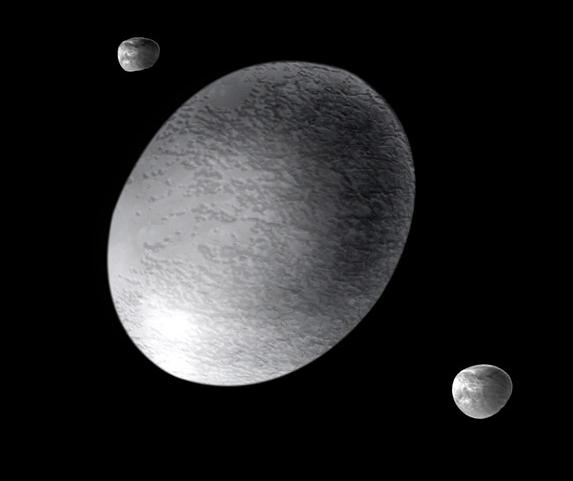“Hearing” an X-ray Hum from a Black Hole
If you had x-ray-sensitive ears (or eyes), the universe would sound (and look) very different from the one we “normally” hear with our frequency-limited ears or see with our wavelength-limited eyes. We’re tuned to hear vibrations that can move through our atmosphere, and since our atmosphere doesn’t get many signals from things like black holes, we didn’t evolve to hear them. Our eyes are essentially sensitive to the wavelengths of light put out by the Sun, as filtered through our atmosphere.

But, we do have instruments orbiting out beyond our atmosphere that “hear” (and actually “see” is a more precise description) x-ray signals from supermassive black holes in the centers of galaxies. The XMM-Newton satellite has been studying these cosmic monsters and has found a periodic x-ray signal from the heart of the galaxy RE J1034+396. It is emitting what is called a quasi-periodic x-ray oscillation that has a period of one hour. That is a very well-tuned black hole!
How can this happen? We know that a black hole sucks matter in. As matter spirals in, it forms into an accretion disk. The matter gets heated up through a variety of processes and emits x-rays. As the matter wobbles in the disk around the black hole, the x-ray emission gets modulated at a certain frequency. That frequency is what XMM-Newton detected as a periodic signal. Astronomers can use the frequency of the signal to estimate the size of the black hole.
Scientists have suspected that the underlying physical processes behind black hole accretion mechanisms are the same for all such black holes. This is true no matter what size the black hole is. This implies that periodic signals (like the one XMM-Newton has detected) should also be emitted by super-massive black holes lodged at the hearts of galaxies. These active regions are called active galactic nuclei. These periodic signals are widely observed in lower-mass black holes seen in our galaxy. But, until now, no supermassive black hole was known to display such a periodic signal. This discovery is confirms that the fundamental physical processes behind black hole accretion mechanisms are the same. So, this x-ray “hum” is a new diagnostic tool that astronomers can use to learn more about active galactic nuclei.

